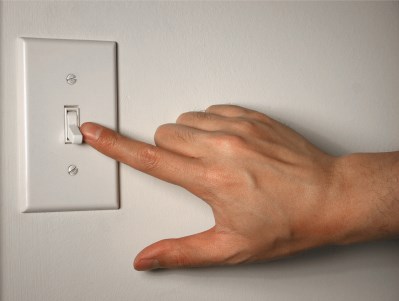Churches find 'green' ways to cut utilities, save money
SPRINGDALE, Ark. (BP)--Some call it "going green," but churches big and small are discovering that examining utilities usage also can translate into significant savings.
More than a year ago, First Baptist Church in Springdale, Ark., which has about 6,000 attendees on Sunday mornings, began a partnership with the company Energy Education to cut into its electric, gas and water bills -- a significant endeavor because the church was spending roughly $1 million annually on its utility bills for its two campuses in Springdale and Rogers and its private school, Shiloh Christian.
In the ensuing year, the church didn't do anything dramatic but simply tried to take common-sense approaches to saving energy: switching off lights when not in use, turning off computers when leaving for the day and paying close attention to thermostat settings, particularly Monday through Saturday. The church examined every point of energy consumption.
The result? The church estimates it saved $268,000 during the first year of its initiative, which ended in February. The figure is a "cost avoidance" calculation that uses, among other things, degree days.
The money saved is money that can be spent elsewhere, such as on missions.
"I think biblically, you're called to be good stewards of what God blesses you with, and I think that's the underlying reason why you do it," Ben Mayes, the church's executive leader of finance, told Baptist Press. "This has helped us focus on being good stewards. It's a great program, and so far we've enjoyed it."
The thermostat setting during Sunday morning worships services remained unchanged, although the thermostat during the rest of the week was tweaked a bit, and significantly so at nights when no one is there. But everyone has remained comfortable, Mayes said.
"We tell our [staff]: Hey, act like you're at home," he said. "That's the easy way of reminding them to turn their lights off.... When you go home at night, turn off your computer, turn off your printers. It's doing what you do at home. You don't go out and leave things on. If you're going for an hour-long lunch meeting, then turn your lights off when you leave."
There were few up-front costs. The church didn't install new air conditioning and heating units or light motion sensors. The church also didn't overhaul the entire lighting system with more energy-efficient florescent lights. Instead, it's doing it little by little. Energy Education recommended that instead of changing all the lighting at once, the church replace each light with a florescent light as the old one burns out.
James Maxwell, the church's energy manager who is in charge of the day-to-day monitoring of the church's energy consumption, said leaving a computer on for an entire month costs $10 in electricity -- which can quickly add up in a facility that has dozens of computers. He attends four Energy Education conferences each year to learn about new ideas to save money.
"You can do it at home," he said. "There's a lot of people who have noticed what we do here, and took it and went home with it."
But even though First Baptist Springdale is what some would consider a mega-church, Mayes and Maxwell said a church of any size can do what they have done and save money.
Roger S. (Sing) Oldham, former pastor of First Baptist Church in Martin, Tenn., who currently serves as the vice president for convention relations with the Southern Baptist Convention's Executive Committee, said his former church implemented some common-sense approaches to cutting its utilities when he arrived there in 1986. The congregation, which had about 1,000 resident members at the time, took three steps: 1) closed off various parts of the building and restricted usage in those sections to Wednesdays and Sundays; 2) installed programmable thermostats, in part to stagger the times the air conditioning and heating units would turn on, to cut down on what is known as electrical demand; and 3) replaced single-pane windows with energy-efficient windows.
Oldham's church took other practical steps. They put together a "master calendar" of what church groups were using what part of the building and when, to determine if energy was being wasted. They also had deacons walk through the building after Sunday School to make sure the lights had been turned off and the thermostat settings had not been moved.
"Through the combination of the zoning, the programmable thermostats and the more efficient windows, we saw a significant reduction in our utility costs," Oldham said. "... Any church can do this."
Michael Foust is an assistant editor of Baptist Press.










